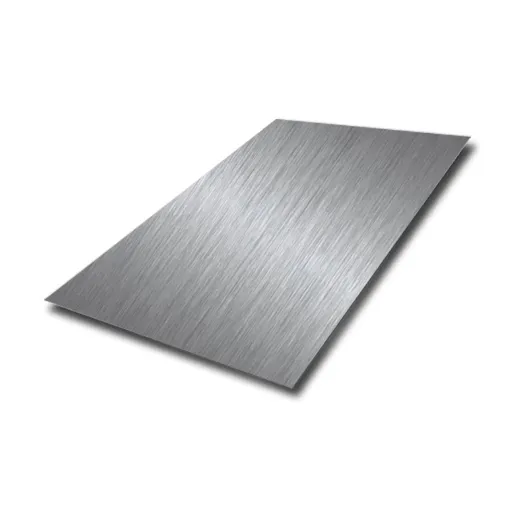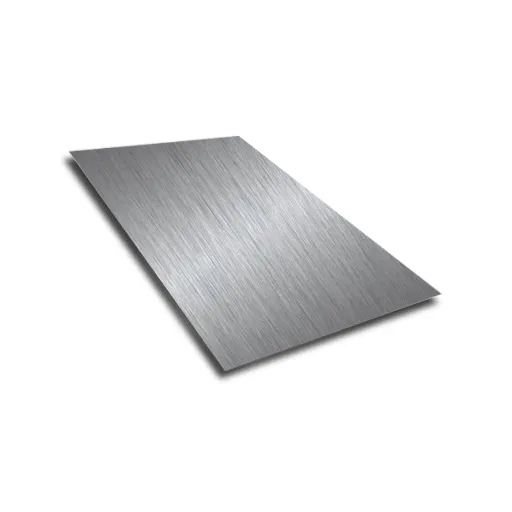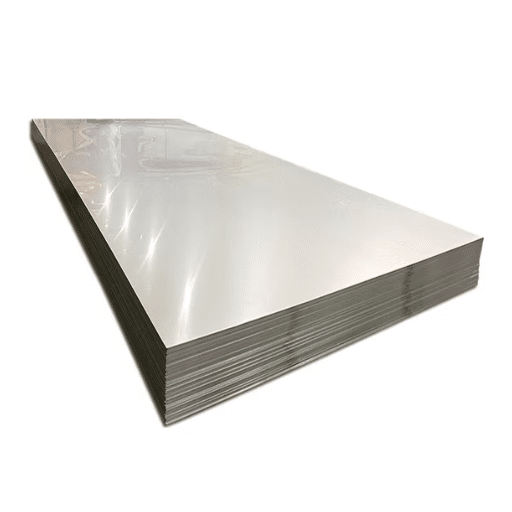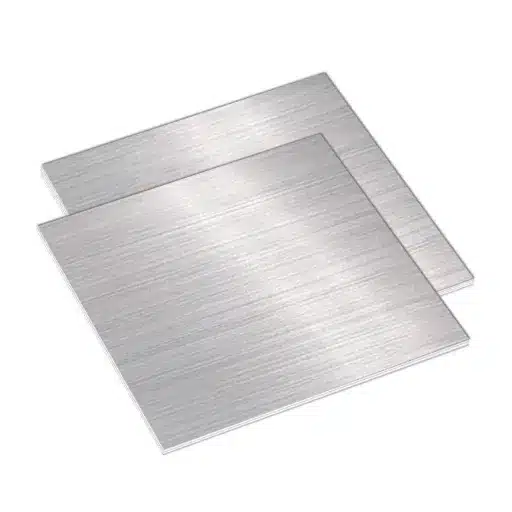Choosing stainless steel in food technology applications is a major consideration for safety, durability, and standards-related reasons. There are a lot of grades and various formulations, and it can really get confusing knowing about food grade stainless steel properties-but the basics are mandatory for those in food processing, packaging, or kitchenware manufacturing. In this guide, it will be a simple yet detailed explanation regarding the best stainless steels for food use, covering considerations for corrosion resistance, cleaning, and overall performance. Up to the end of this article, you will have gained some insight into making knowledgeable choices about selecting the best stainless steel for a given purpose.
Understanding Stainless Steel Grades
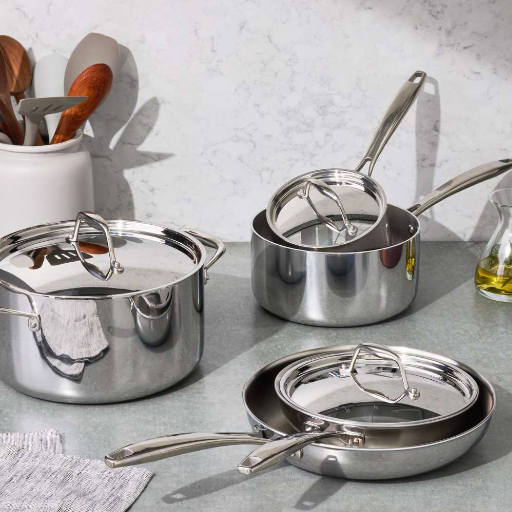
The stainless steel commonly used for food applications is 304 and 316. Both fall under austenitic stainless steels, usually having the very best corrosion resistance, very easy cleanability, and durability, which are all characteristics crucial for food safety.
- 304 Stainless Steel: In the market, 304 has always been considered the “food-grade” stainless steel and contains 18% chromium and 8% nickel. Food-grade stainless steel resists rust, stays clean with a smooth surface to prevent bacteria, and is therefore suitable for food processing equipment, sinks, and utensils.
- 316 Stainless Steel: This is a grade with 18% chromium, 10% nickel, and 2-3% molybdenum, which acts to improve corrosive resistance in the presence of chlorides. It is generally used for processing hydrochloric acid brines, chilean acids, and even on chloride-containing atmospheres, e.g., marine environments.
Regardless of the applications and wide versatility of 304 and 316 grades and their high hygiene levels, different exposure conditions will mainly govern a choice between the two.
Overview of Different Types of Stainless Steel
|
Grade |
Key Composition |
Corrosion Resistance |
Common Applications |
Key Features |
|---|---|---|---|---|
|
304 Stainless Steel |
18% chromium, 8% nickel |
Good, suitable for everyday use |
Kitchenware, appliances, construction |
Affordable, widely used |
|
316 Stainless Steel |
18% chromium, 10% nickel, molybdenum |
Excellent, resists chlorides and acids |
Marine, chemical, medical industries |
High chloride resistance |
|
201 Stainless Steel |
Lower nickel, higher manganese |
Moderate, less than 304 and 316 |
Cookware, appliances, automotive trim |
Affordable, strong |
|
430 Stainless Steel |
16-18% chromium, no nickel |
Moderate, less corrosion resistance |
Decorative trims, home appliances |
Magnetic, cost-efficient |
|
410 Stainless Steel |
11.5-13.5% chromium, low nickel |
Basic corrosion resistance |
Cutlery, valves, surgical instruments |
High strength, hardness |
|
2205 Duplex Steel |
Chromium, nickel, molybdenum mix |
Superior, excellent in critical conditions |
Oil, gas, chemical, marine applications |
High strength, low weight |
|
17-4 PH Stainless Steel |
Chromium, nickel, copper |
Good, with high tensile strength |
Aerospace, chemical, medical equipment |
Precipitation-hardened |
What is Food Grade Stainless Steel?
Food-grade stainless steel is a class of stainless steel designed specifically to meet the strict requirements of safety, durability, and hygiene that are required for food processing and food handling. In most cases, the compositions will never corrode or leach anything that might be toxic into either acidic or alkaline food materials. Frequently, the most commonly used food-grade stainless steel is 304 stainless steel, containing approximately 18% chromium and 8-10% nickel, thereby offering excellent resistance to oxidation and corrosion.
For more hostile environments where undue chloride presence or acidic substances are involved, 316 stainless steel is usually preferred because the further presence of molybdenum gives it even better corrosion resistance. The nonporous nature of both alloys also makes it impossible for bacteria and other pathogens to lurk on the surface, which is exactly why these are sought after from small scale kitchen equipment and cookware to large scale food processing machinery.
Food grade stainless steels differ from corrosive resistant steels by having to fulfill certain criteria laid down by regulatory agencies such as FDA or EFSA for assuring food safety under direct contact with consumables. Due to these strict criteria, food grade stainless steels are always sought after in industries demanding high sanitary, good life, and performance attributes.
Comparing Grade 304 and Grade 316 Stainless Steel
|
Parameter |
Grade 304 |
Grade 316 |
|---|---|---|
|
Composition |
Contains chromium and nickel |
Adds molybdenum for corrosion resistance |
|
Corrosion Resistance |
Resistant to most oxidizing acids |
Higher resistance to harsh environments |
|
Resistance to Chlorides |
Limited resistance to chlorides |
Excellent resistance to chlorides |
|
Cost |
Generally less expensive |
More expensive due to molybdenum |
|
Strength |
Good strength for general use |
Slightly higher tensile strength |
|
Applications |
Kitchens, sinks, utensils |
Marine, chemical, and pharmaceutical uses |
|
Weldability |
Excellent weldability |
Excellent, but may need post-weld treatment |
|
Heat Resistance |
Good up to 870°C |
Better performance at elevated temperatures |
|
Availability |
Widely available |
Available, but less common |
|
Appearance |
Bright, polished finish |
Similar, but slightly darker tone |
Properties of Food-Grade Stainless Steel
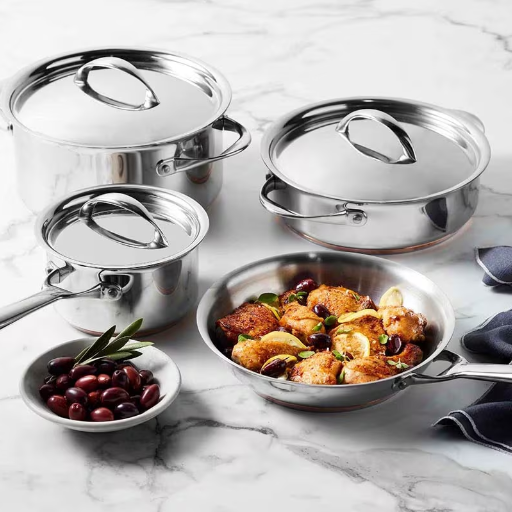
- Corrosion Resistance
Stainless steel, particularly types such as 304 and 316, exhibits excellent resistance to corrosion. This property ensures durability and hygiene in environments exposed to moisture, acidic compounds, or cleaning agents. Type 316, containing molybdenum, offers superior corrosion resistance, especially against chloride-induced pitting.
- Non-Reactive Surface
Food-grade stainless steel is non-porous and chemically inert to prevent the alteration in the taste, odor, or any other quality of the food. Such chemical inertness is particularly important when dealing with acidic or highly alkaline substances.
- Ease of Cleaning
With its perfectly smooth and polished surface, thorough cleaning and sanitization of stainless steel become easy, offering very little scope for bacterial or fungal growth. Therefore, maintaining proper hygiene levels in applications related to food should be attributed to stainless steel.
- High Tensile Strength
With tensile strengths high enough to resist forces applied during mixing, cutting, or transport, food-grade stainless steel is mechanically strong and highly durable for industrial machines and tools.
- Heat Resistance
It is thermally stable, too, staying in operation when heated to considerable temperatures. Type 304 will sustain itself well till about 870°C, while type 316 will handle even higher temperatures.
- Aesthetic Appearance
The brighter finish of food-grade stainless steel sets the aesthetic appeal and is greatly looked upon for kitchenware and other consumer products.
Corrosion Resistance: Why It Matters
Corrosion resistance is a critical feature of the material, mainly in an environment that includes moisture, chemicals, or even mild changes in temperature. On the other hand, materials prone to corrosion degrade with an interrupted life span wherein they give rise to structural weakness, threaten contamination, and risk; in addition, they become a maintenance or replacement cost. Stainless steel, especially 304 and 316 grades, is considered highly corrosion-resistant. The corrosion resistance being present, this material is durable and hygienic in wetter environments, with acidic compounds or cleaning agents. Type 316 provides overall corrosion resistance favorable to pitting in chloride environments because it contains molybdenum. This, however, is further increased in type 316 due to molybdenum addition that give 316 a resistance against chloride-induced pitting, therefore making it preferrable in marine environments or applications involving high salinity. Therefore, the existence of corrosion-resistant material clearly leads to a long life duration with less maintenance and safe handling; hence, it is very paramount for use in food processing, pharmaceutical, and construction industries. Much research is still attesting to this concept of an extended life cycle and cost advantage by using such materials in very demanding applications.
Durability and Longevity in Food Applications
With such high corrosion resistance and mechanical strength, materials like stainless steel and high-end polymer composites find extensive applications in the food processing industry. Stainless steel of austenitic grades such as 304 and 316 finds greater acceptability in food processing industries because of its resistance to corrosion caused by acidic ingredients and chlorine-based cleaning agents and its ability to withstand high-temperature conditions of the food processing environment. Studies indicate the use of such materials greatly reduces degradation and maintenance downtime of equipment, which guarantees uninterrupted operation at a huge scale of food factories and successfully assures consistency in product quality. The materials are non-porous and easy to sanitize, hence adhering to stringent regulatory requirements for food safety. These materials provide further cost benefits through a long service life, thus minimizing frequent replacement needs and allowing for channeled resources to be used for the enhancement of food production.
Ease of Cleaning and Maintenance
Being advanced non-porous materials, their surfaces do not allow a stain or a microbe to grow on them. Solid world standard design and construction, however, allows companies to continue exploitation of these materials, inclusive of high-hazard cleaning chemicals and top-class wash cycles, while sustaining their structural and performance characteristics. Industry criteria are focused on Total Plate Count (TPC) reduction percentages, whereas non-porous materials tend to provide the highest levels of performance to reduce contamination and risk levels in critical environments, including food processing and pharmaceutical production. Furthermore, in conjunction with these materials, few streamlined designs and seamless arrangements get rid of any spots that could collect dirt or bacteria, immensely reducing cleaning time and labor costs. The presence of durability and hygiene features makes these materials fulfill the regulatory requirements of HACCP and FSMA while enabling maximum throughput in operation.
Choosing the Best Stainless Steel for Food Applications
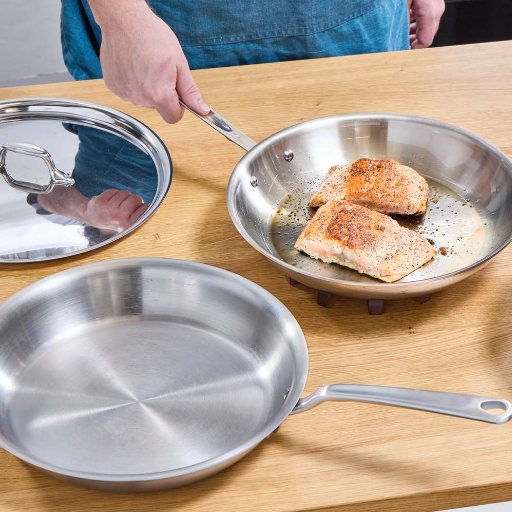
- Corrosion Resistance: Choose stainless steel grades such as 304 or 316, which have a high ability to resist corrosion from acids, salts, and any other substances related to food. Grade 316 will have better corrosion resistance due to the presence of molybdenum, which constitutes the best choice when contemplating extremely acidic or saline environments.
- Ease of Cleaning: The surface must always be smooth and non-porous for fulfilling the food safety standards. A popular choice among austenitic stainless steel is grade 304 because of its very cleanability and low maintenance requirements.
- Strength and Durability: Evaluate the operational requirements of the environment. In such cases where food processing equipment is under use most of the time, grades of stainless steel that have a higher mechanical strength such as 304 could give long-term durability.
- Regulatory Compliant: Get the specific safety and quality standards met by the material you choose, like FDA or NSF requirements. Such approvals make sure to ascertain the material is safe to be used in contact with food.
- Cost-Efficiency: The full evaluation must be done, including both the initial and lifetime costs. The higher grades, such as 316, might stand much higher in the first few costs; nevertheless, this level compels their durability and resistance to wear that might bring about much fewer recurrences of expenses along the lifetime.
Correct stainless steel selection is a strict assessment of environmental factors, operational needs, and compliances. From there, adjusting material choices depending on specific cases will work best for performance and safety.
Resistance to Acidic Foods: Importance and Impact
Resistance to acidic foods is a vital property rendering stainless steel suitable for food preparation and processing applications. The corrosive influences of acidity from foods like tomatoes, citrus fruits, or vinegar on thin metals that cannot resist degradation cause their own structural degradation and compromise food standards. Stainless steel grades carrying higher amounts of chromium and nickel, like 304 and 316, fare well against an acidic environment by way of bolstered formation of an enhanced passivation layer, that is indeed an oxide film preventing corrosion.
Thermal Conductivity and Its Role in Cookware
Heat conductivity is one important property that defines the performance of cookware as it directly relates to heat dispersal and heat retention. Materials with high thermal conductivity, such as copper and aluminum, disperse heat exceedingly well so that hot spots are minimized and even cooking is ensured. For instance, copper has a thermal conductivity of around 401W/m·K, making it an exceptional conductor of heat, which quickly dies away with time from initial heating and allows an immediate reaction of temperature change.
Common Grades of Stainless Steel Used in the Food Industry
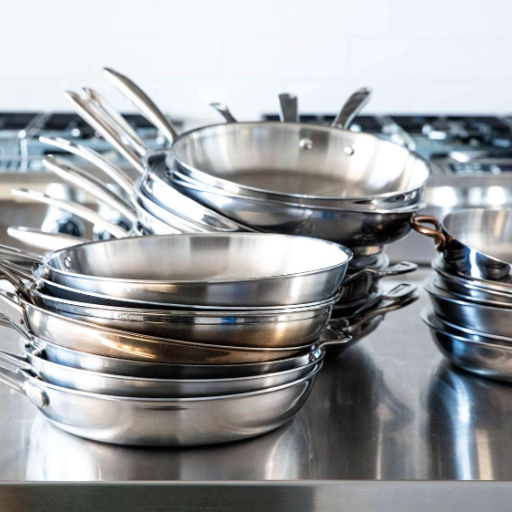
- Grade 304
This stainless steel is widely used in the food industry due to excellent corrosion resistance properties, easy cleaning, and low cost. It contains 18% chromium and 8% nickel with high durability and resistance to oxidation and most food acids.
- Grade 316
It is used ubiquitously in highly corrosive environments because of its best resistance to chlorides, such as seafood processing. The presence of 2-3% molybdenum enhances its corrosion resistance capabilities over grade 304.
- Grade 430
This is more economical, generally employed wherever a mild corrosion resistance is all that is needed, such as kitchen utensils and equipment. But being without nickel, it is not resistant to all chemicals. Hence, it is cheap.
The grades have been selected on account of their specific attributes and applications in diverse food-related processes to guarantee safety, durability, and hygiene.
Best Stainless Steel for Commercial Kitchens
In choosing stainless steel for commercial kitchens, the primary consideration should lie on a balance between durability and corrosion resistance and with food safety standards. Among the most common ones is stainless steel grade 304. It is well known to resist corrosion and oxidation excellently, as it has a high chromium and nickel content. It is used for food preparation surfaces, sinks, storage equipment, and all areas exposed to moisture and acids.
Sometimes in an environment wherein one is buckling under health management funds, 430, another grade of stainless steel, is a cheaper choice. It contains no nickel but has a durability good enough for use in utensils, splashbacks, and decorations where harsh chemical exposure is unlikely.
Stainless steel grade 316 is highly recommended for commercial kitchens to be exposed to saline solutions and/or acidic solutions and/or grave cleaning processes. Its further addition of molybdenum makes it resistant to chloride corrosion to a degree higher than grade 304, proving invaluable in the marine or high salinity environments such as seafood processing.
Food Safety Regulations and Compliance Standards
Compliance with food safety regulations must be observed to maintain public health and the integrity of food production processes. The FDA Food Code in the United States or Regulation (EC) No 852/2004 of the European Union on that hygiene of foodstuffs includes stringent requirements on the design, maintenance, and sanitation of food-contact surfaces, giving greatest preference to materials that are non-toxic and corrosion-resistant, such as stainless steel in grades such as 304 and 316 that also bear the NSF International certification for hygiene. In line with that, the grounds for modern sanitation have come to emphasize compatibility with the CIP system, a fact that further underscores the requirement for the structural integrity of materials on exposure to repeated treatments at very high temperatures and aggressive detergents. With the regulations in place, not only does the manufacturer provide a safeguard for consumers, but it is simultaneously protected from contamination and potential economic loss arising from product recalls or penalties imposed by regulatory bodies.
Final Recommendations and Insights
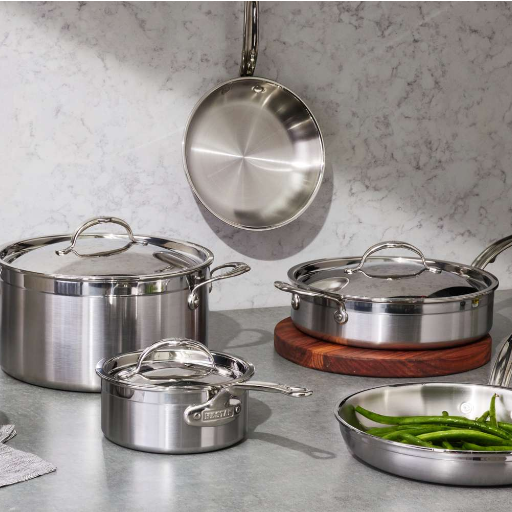
Ensuring their compliance will therefore call on manufacturers to put their energies into the selection of materials and equipment that will hold the rigors of sanitation processes and meet the certification standards specific to their industries. Corrosion-resistant and durable materials under thermal stress that are CIP compatible should be preferred to ensure the smooth flow of operations and product safety. Audits on a regular basis and grooming of staff in hygiene protocols will go a long way in reducing contamination risks and ensuring compliance with the ever-evolving regulatory needs. These features go a long way in building consumer confidence against recall incidents that protect the brand in competitive arenas.
Choosing the Right Stainless Steel for Your Needs
When selecting a stainless steel grade for your application, it is crucial to assess the specific operational conditions and performance requirements. Stainless steels are broadly categorized into austenitic, ferritic, martensitic, duplex, and precipitation-hardening grades, each offering distinct mechanical properties and chemical resistance profiles.
Austenitic grades such as 304 or 316 stainless steel are commonly recommended for environments exposed to extreme temperatures or corrosive agents. For instance, being 316 has molybdenum, which provides resistance to chlorides and harsh chemicals, placing it into the field for use in marine, medical, or food processing applications. Ferritic steels such as grade 430 are recommended for less aggressive environments with cost-efficiency and good corrosion resistance.
Martensitic grades (such as 410 or 420) are used in applications where strength and hardness are necessary for good mechanical properties. Duplex stainless steels have the advantage of austenitic and ferritic so that they may be used in chemical processing or oil and gas industries, where there is high pressure and stress. Precipitation-hardening steels provide very high strength and corrosion resistance and are usually used in aerospace or heavy industrial equipment.
Long-Term Considerations for Food-Grade Stainless Steel
Several factors must be analyzed for food-grade stainless steel intended for a long-term application to ensure safety and performance. Corrosion resistance comes first: extended exposure to moisture, acids, and salts, common in food environments, can degrade the material over time. Type 316 and 304 stainless steel are mostly preferred because of their resistance against pitting and crevice corrosion in special places with moisture and more acidity.
Reference Sources
-
Resistance of Bacterial Biofilms on Stainless Steel Surfaces: This study examined the resistance of bacterial biofilms formed on stainless steel surfaces to disinfecting agents. It highlighted the importance of selecting appropriate stainless steel grades for food industry usage to ensure effective hygiene and safety. Read more
-
CoO-ZnO Nanocomposite for Corrosion Protection: This research explored the use of a CoO-ZnO nanocomposite as a corrosion protection coating for stainless steel in saline solutions. It demonstrated enhanced corrosion resistance, making it suitable for food containers exposed to harsh environments. Read more
-
Transfer Efficacy of E. coli on Food Processing Materials: Investigated the transfer of Escherichia coli O157:H7 between surfaces, including stainless steel (type 304), and green tomatoes. It found that bacterial survival was influenced by humidity levels and material type. Read more
Frequently Asked Questions (FAQs)
Q: What types of stainless steel are best for food-safe applications?
A: The best food-grade stainless steel includes 304 and 316 stainless steel, both of which are highly regarded for their corrosion resistance and safety in food manufacturing. 304 grade stainless steel is often used in kitchen equipment due to its excellent durability and ease of cleaning. On the other hand, 316 stainless steel offers even better resistance to corrosion, especially in harsh environments, making it a preferred choice for food and beverage industries. These grades contain a higher chromium content, which contributes to their protective oxide layer, ensuring they remain safe for food contact. In contrast, grade 430 stainless steel is less corrosion-resistant and is typically used for applications where food safety is not a primary concern.
Q: Is 430 stainless steel safe for food use?
A: Grade 430 stainless steel is considered a lower-grade option compared to 304 and 316 stainless steel when it comes to food safety. While it is resistant to corrosion, it does not possess the same level of durability and protective characteristics as higher grades. Food makers often avoid using 430 stainless steel for food contact items because it can be susceptible to rust and staining over time. However, it can be used in certain applications where food safety and hygiene standards are not critically stringent. If you are looking for a more reliable option for food storage or preparation, it is advisable to use stainless steel that meets food-grade standards, such as 304 or 316.
Q: How does the corrosion resistance of stainless steel affect its use in food applications?
A: The corrosion resistance of stainless steel is crucial in food applications, as it ensures that the surface of stainless steel remains free from contaminants that could leach into food. Stainless steel is resistant due to its protective oxide layer that forms when chromium is present, making it ideal for food processing and storage. This resistance helps maintain food safety and hygiene standards, which are vital for any food manufacturer. In contrast, plain steel or mild steel lacks this protective layer, making it unsuitable for direct contact with food. When choosing stainless steel for food-related uses, selecting a higher grade like 304 or 316 can provide added peace of mind regarding corrosion resistance.
Q: What makes stainless steel the best choice for food-grade metal?
A: Stainless steel is considered the best food-grade metal due to its excellent strength, durability, and resistance to corrosion. It is easy to clean, which is a significant advantage in maintaining food safety and hygiene standards. Many food makers use stainless steel because it does not react with food, preventing any undesirable flavors or substances from contaminating the food. Additionally, stainless steel’s protective oxide layer contributes to its longevity and performance in various food and beverage applications. Overall, stainless steel food grade materials ensure that food remains safe and uncontaminated, making them a preferred choice in the food industry.
Q: Are there alternatives to stainless steel for food applications?
A: While stainless steel is often the preferred choice for food applications, there are alternatives available depending on the specific needs. Materials such as food-grade plastics, glass, and ceramics can be used in certain applications where stainless steel may not be suitable. However, these materials often lack the strength and durability that stainless steel provides. For instance, glass is easy to clean and does not react with food, but it is not as durable as stainless steel and can break easily. In contrast, when it comes to heavy-duty food manufacturing, stainless steel’s combination of corrosion resistance and ease of maintenance makes it a stronger and safer food-grade metal compared to many alternatives.

